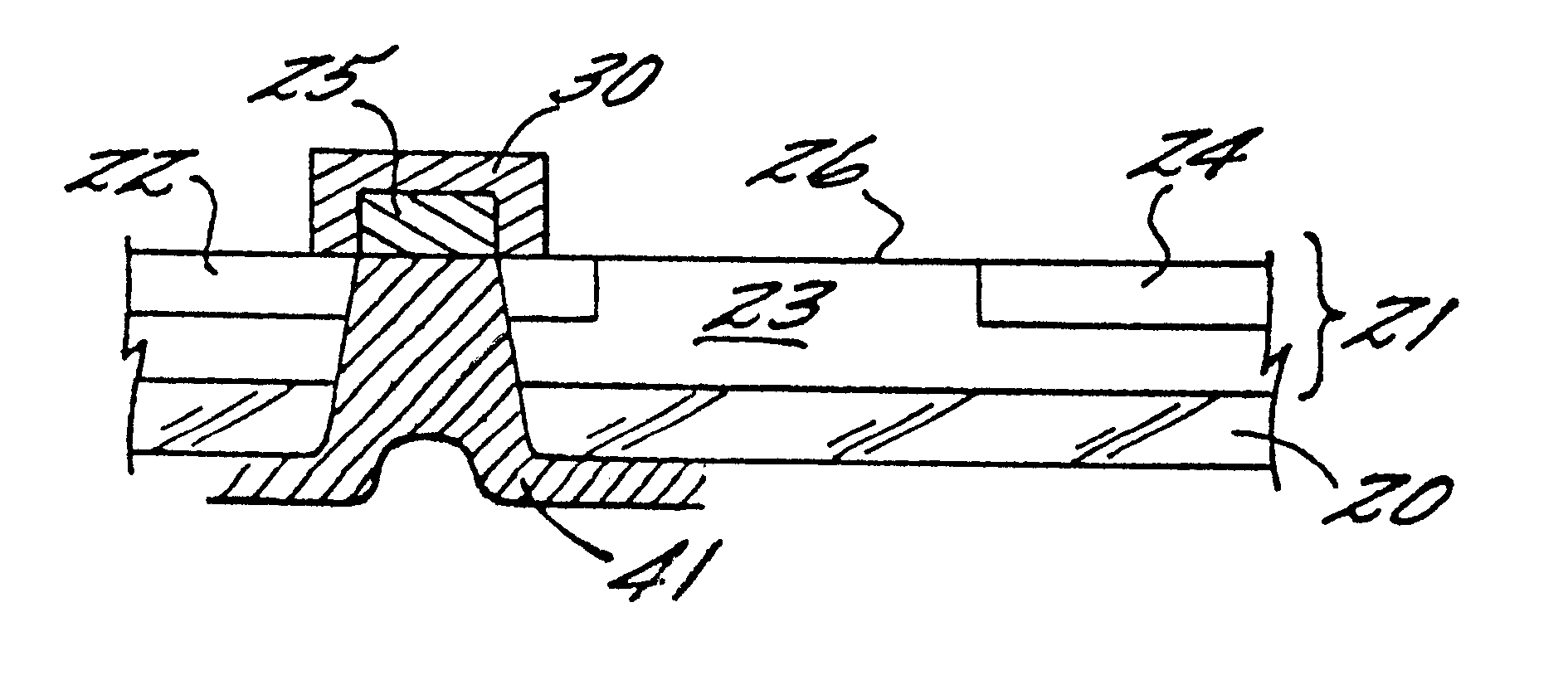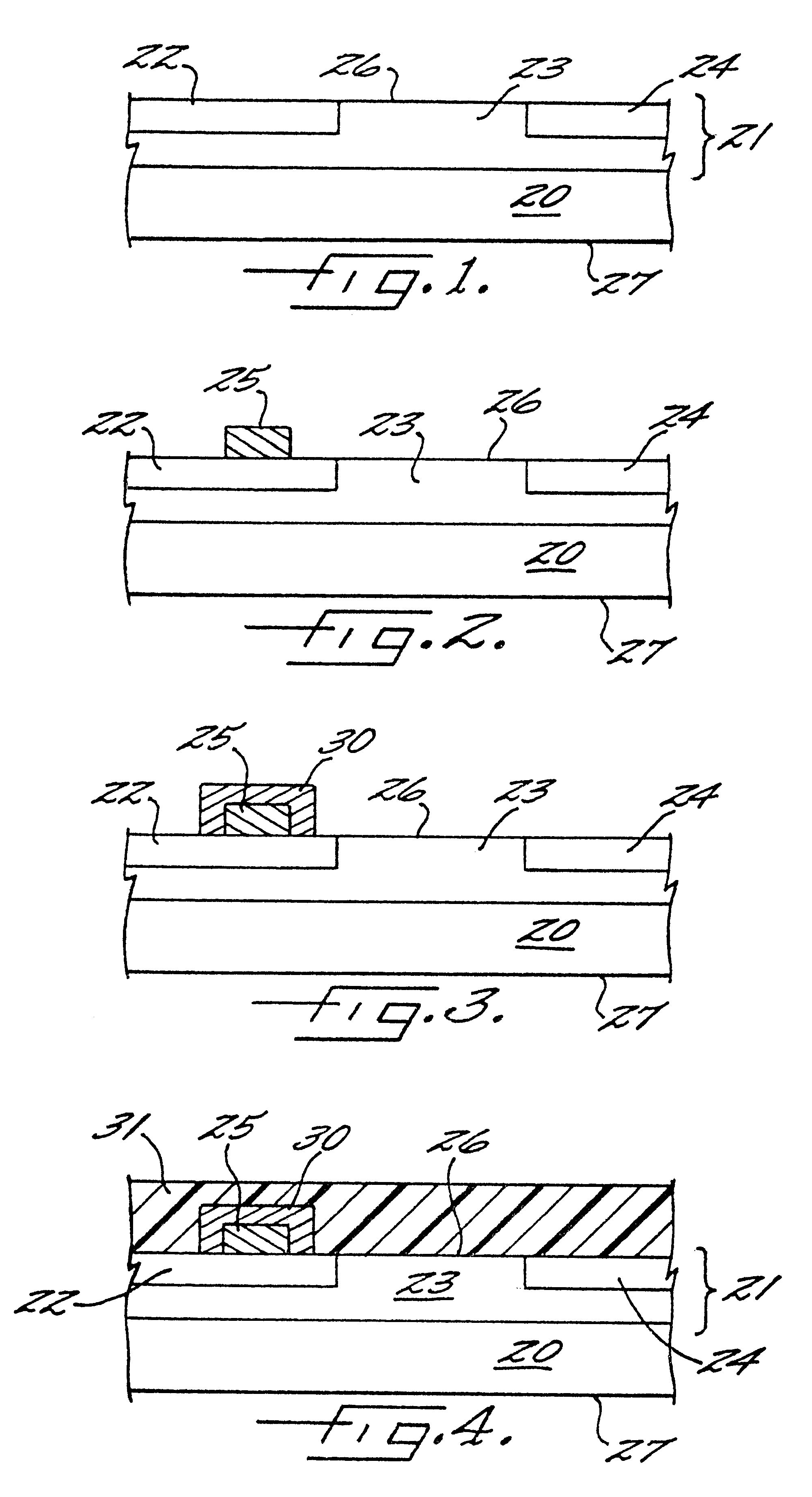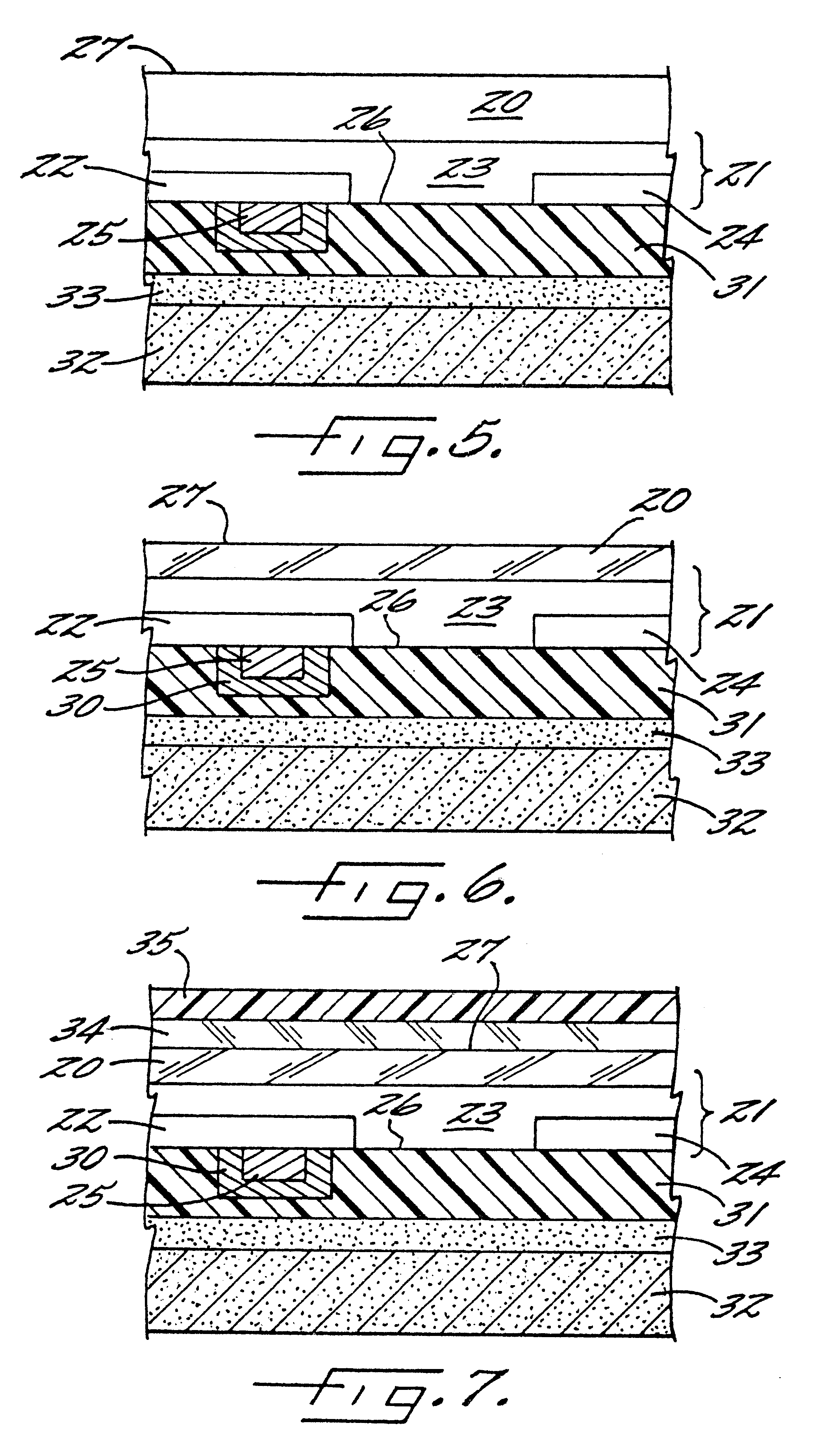Method of forming vias in silicon carbide and resulting devices and circuits
a silicon carbide and via technology, applied in semiconductor devices, semiconductor device details, electrical apparatus, etc., can solve the problems of limiting the gain that can be delivered at high frequencies, affecting the performance and affecting the efficiency of silicon carbide devices
- Summary
- Abstract
- Description
- Claims
- Application Information
AI Technical Summary
Benefits of technology
Problems solved by technology
Method used
Image
Examples
Embodiment Construction
In preferred embodiments, the present invention also comprises a method of dry etching a via in SiC using sulfur hexafluoride chemistry in an inductively coupled plasma (ICP). In a particular embodiment of the invention, the dry etching was conducted in a Model 790 ICP system manufactured by Plasma-Therm Incorporated.
In this system, the wafer is placed on a He-cooled chuck in the process chamber, the wafer is clamped and subsequently the process chamber is evacuated to 10.sup.-5 Torr with a turbo and mechanical pump. Five to twenty cubic centimeter per minute electronic grade sulfur hexafluoride is injected into the process chamber and a butterfly valve above the turbo pump is throttled to achieve the operating pressure of 2 to 5 mT. Subsequently, power is applied to generate a plasma. This system uses two radio frequency (RF) power sources. One is connected to the chuck and is used to control energies of ions reaching the substrate and is set between 1 to 2 W / cm.sup.2. The second R...
PUM
 Login to View More
Login to View More Abstract
Description
Claims
Application Information
 Login to View More
Login to View More - R&D
- Intellectual Property
- Life Sciences
- Materials
- Tech Scout
- Unparalleled Data Quality
- Higher Quality Content
- 60% Fewer Hallucinations
Browse by: Latest US Patents, China's latest patents, Technical Efficacy Thesaurus, Application Domain, Technology Topic, Popular Technical Reports.
© 2025 PatSnap. All rights reserved.Legal|Privacy policy|Modern Slavery Act Transparency Statement|Sitemap|About US| Contact US: help@patsnap.com



